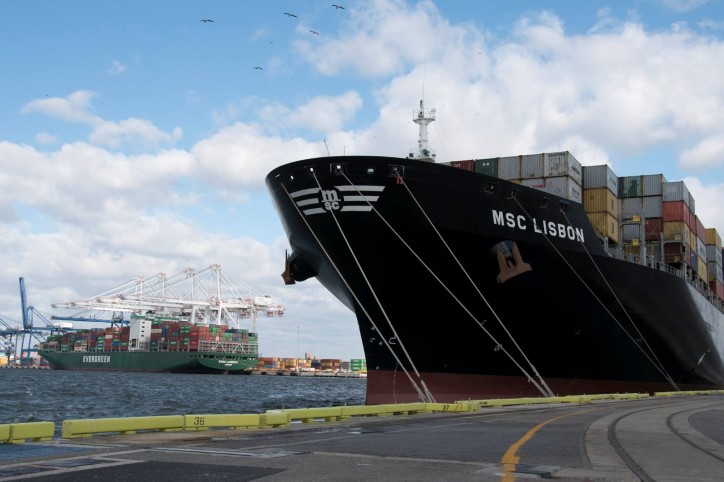Coming off a record 2016, the Helen Delich Bentley Port of Baltimore’s public marine terminals jumped right into 2017 with a record month in January. The Port handled 923,030 tons of general cargo (cars, containers, farm and construction equipment, forest products, and breakbulk). Most that tonnage was containers which also had a record for one month--- 712,386 container tons.
“This record-breaking growth is a direct result of Maryland’s strategic investments in the Port of Baltimore,” said Governor Larry Hogan. “As one of only four East Coast ports that have the infrastructure to handle the new mega-ships, the Port continues to demonstrate that Maryland is indeed Open for Business.”

Image courtesy of: Port of Baltimore
The general cargo record is a 14 percent improvement from January 2016. Last year the Port’s public marine terminals handled a record 10 million tons of general cargo. January’s amount of container tons was a whopping 20 percent leap over January 2016. The Port also handled 37,694 loaded containers in January, another record. Last year, a record 538,567 containers crossed the Port’s public piers.
In addition to those monthly records, rolled paper was up 26 percent and cars were up 16 percent from January 2016.
The Port of Baltimore was recently named the most efficient port in the U.S. for the third consecutive time by an independent analysis conducted by the Journal of Commerce. The Port averaged 71 container moves per hour per berth, a rate faster than any other major American port.
Business at the Port of Baltimore generates about 13,650 direct jobs, while more than 127,000 jobs in Maryland are linked to port activities. The Port is responsible for nearly $3 billion in individual wages and salary and more than $310 million in state and local tax revenues.
In December 2016, the Hogan administration applied for a U.S. Department of Transportation (USDOT) FASTLANE grant to double-stack Baltimore’s Howard Street Tunnel. Reconstructing the 122-year-old tunnel, which connects to the port and handles some port products, will accommodate double-stacked container trains and break a bottleneck that impacts the entire East Coast. This project will be key to meeting the Port of Baltimore’s rapidly growing container business with mega-ships from the expanded Panama Canal. Maryland’s application is currently under review by USDOT.
Source: Port of Baltimore